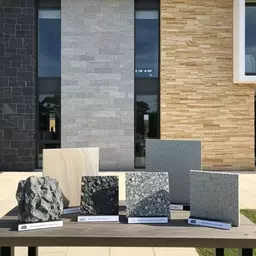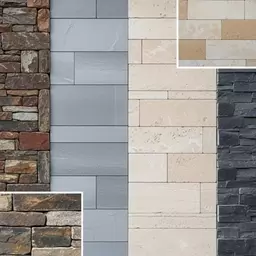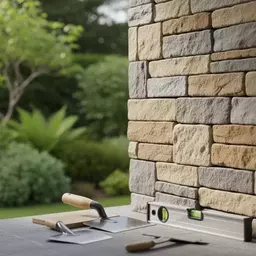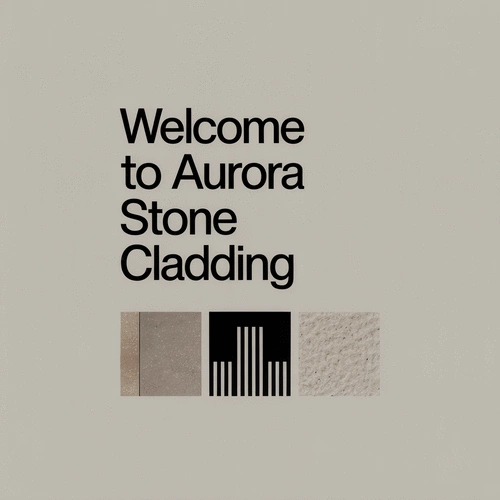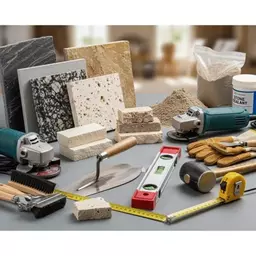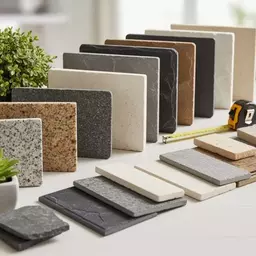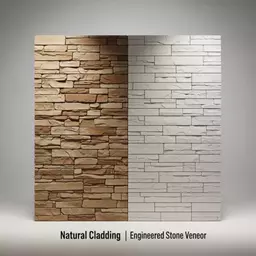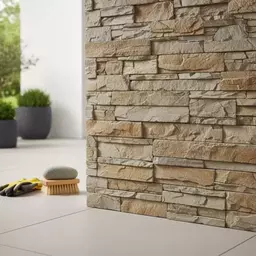When it comes to transforming your living space, few materials can match the elegance and durability of stone cladding. The choices you make can define the aesthetic and functionality of your home. Are you ready to explore how stone cladding can elevate your project to the next level?
What You Will Learn
- Stone cladding enhances your home's aesthetics, combining beauty with practicality.
- Natural stone offers unique textures, while artificial stone provides versatility and ease of installation.
- Understanding installation methods—wet versus dry—can significantly impact your project's longevity and appearance.
- Cost considerations, including material and labor expenses, are crucial for budget management.
- Choosing eco-friendly options supports sustainability while achieving your design goals.
Understanding Stone Cladding Options and Installation
This visual summarizes the key aspects of stone cladding, contrasting natural vs. artificial stone and wet vs. dry installation methods, highlighting their benefits and considerations. For a deeper dive into the specifics of installation, consider our stone cladding installation guide.
Material Comparison: Natural vs. Artificial Stone
Natural Stone:
- Durable, unique textures
- Eco-friendly, authentic look
- Higher cost, heavier
Artificial Stone:
- Cost-effective, versatile
- Lightweight, consistent appearance
- May lack natural depth
Installation Methods: Wet vs. Dry
Wet Method:
- Uses mortar for strong bond
- Ideal for textured stones
- Requires skilled labor
Dry Method:
- Utilizes adhesives
- Offers flexibility and ease
- Potentially lower labor costs
Understanding Stone Cladding Installation: An Overview
When it comes to enhancing the beauty and durability of your home, stone cladding is an exceptional choice. Not only does it provide a stunning visual appeal, but it also offers numerous benefits that can elevate your project from ordinary to extraordinary. Have you ever wondered how this architectural feature can transform your living space? Let's dive into what stone cladding is all about!

What is Stone Cladding and Its Benefits?
Stone cladding refers to a thin layer of natural or artificial stone applied to a structure to give the appearance of solid stone. This method is not only stylish but also practical, as it can improve insulation and protect your building from the elements. Here are some key benefits that make stone cladding a popular choice:
- Enhanced Aesthetics: Stone adds a timeless beauty that complements various architectural styles.
- Durability: It resists weather, pests, and wear, ensuring your investment stands the test of time.
- Low Maintenance: Most stone types require minimal upkeep, allowing you to enjoy their beauty without constant care.
With these benefits in mind, it’s easy to see why many homeowners, builders, and architects, like those at Aurora Stone Cladding, are opting for this remarkable material. Think of it as a way to make your home not just a place to live but a work of art!
The Aesthetic Appeal of Stone in Home Projects
Now that we understand the benefits of stone cladding, let’s talk about its aesthetic appeal. Stone can create various looks, from rustic to modern, depending on the type and finish you choose. Imagine walking into your home and being greeted by the warm embrace of natural stone or the sleek sophistication of engineered stone. Here are some design ideas to spark your imagination:
- Feature Walls: Use stone cladding on a single wall to create a stunning focal point.
- Exterior Facades: Transform your home’s exterior with a blend of textures and colors that reflect your style.
- Interior Accents: Incorporate stone in places like fireplaces or kitchen backsplashes for a touch of elegance.
At Aurora Stone Cladding, we believe the right stone can tell your story, enhancing not only the look of your project but also enriching the experience of those who inhabit the space.
Exploring Different Types of Stone Cladding: Natural vs. Artificial
With the variety of stone cladding options available, it’s essential to understand the differences between natural and artificial stone. Natural stone cladding, such as granite or slate, brings unique textures and colors, ensuring that every piece is one-of-a-kind. On the other hand, artificial stone offers a range of designs that can mimic the look of natural stone while often being lighter and easier to install. Here’s a quick comparison:
- Natural Stone: Durable, unique, and eco-friendly, but can be more expensive and heavier.
- Artificial Stone: Cost-effective, lightweight, and versatile, with a consistent appearance but may lack the depth of natural textures.
Choosing between the two depends on your project’s goals and your personal taste. For more detailed information on selecting the right material, explore our insights on natural vs. engineered stone cladding. At Aurora Stone Cladding, we can help you navigate these choices, ensuring that you select the perfect cladding that aligns with your vision and lifestyle!
Evaluating Installation Methods for Your Home Project
Once you've selected the stone cladding that resonates with your style and needs, the next step is to understand how to install it effectively. The installation method plays a crucial role in the final result and the longevity of your project. Let's explore the various methods available and what they entail!
Interactive Poll: Your Preference!
When it comes to choosing stone cladding for your home, which type do you prefer? Share your thoughts below:
Summarizing Key Insights for Your Stone Cladding Project
As we wrap up our exploration of stone cladding, let's take a moment to recap the essential installation methods and material options we discussed. Choosing the right approach and materials is crucial for ensuring not just the beauty, but also the longevity of your project. The two main methods—wet and dry—each come with their own set of advantages and challenges, so understanding these can greatly influence your decision-making process.
When selecting materials, remember to consider both natural and artificial options. Each has its own unique benefits, from durability to aesthetic appeal. Choosing wisely will help you achieve the look you desire while staying true to your practical needs!
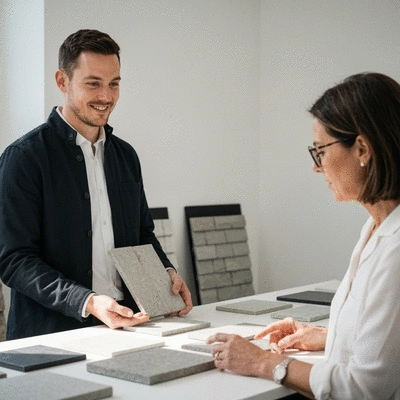
Recap of Installation Methods and Material Selection
- Wet Method: Involves using mortar for a strong bond, ideal for textured stones.
- Dry Method: Utilizes adhesives, offering flexibility and ease of installation.
- Natural Stone: Offers unique patterns and textures, enhancing aesthetic appeal.
- Artificial Stone: Generally more affordable and can mimic natural look.
Understanding these methods and materials is key to making informed choices that suit your vision and project requirements!
Cost Considerations and Sustainable Choices to Remember
As you finalize your plans, it's important to keep an eye on costs. The price can vary significantly between the wet and dry methods, as well as between natural and artificial stones. I've seen many clients successfully balance their budgets by carefully evaluating their options. Here are a few cost factors to keep in mind:
- Material costs: Natural stones tend to be pricier than artificial options.
- Labor expenses: Wet installations often require more skilled labor.
- Maintenance: Some materials may need more upkeep than others, impacting long-term costs.
Being mindful of these aspects can help you stay within budget while achieving the desired results for your space. Plus, consider the eco-friendly options for stone cladding that not only look great but also support sustainability.
Frequently Asked Questions (FAQs) About Stone Cladding
- What is stone cladding?
- Stone cladding is a thin layer of natural or artificial stone applied to a structure to give the appearance of solid stone, enhancing aesthetics and providing protection.
- What are the main benefits of using stone cladding?
- Key benefits include enhanced aesthetics, high durability against weather and pests, and low maintenance requirements.
- What is the difference between natural and artificial stone cladding?
- Natural stone offers unique textures, durability, and an eco-friendly appeal but can be heavier and pricier. Artificial stone is cost-effective, lightweight, versatile, and provides a consistent appearance, though it may lack the natural depth of real stone.
- What are the two main installation methods for stone cladding?
- The two main methods are the wet method, which uses mortar for a strong bond and is ideal for textured stones, and the dry method, which utilizes adhesives for flexibility and easier installation.
- What should I consider when budgeting for a stone cladding project?
- Consider material costs (natural stone is typically more expensive), labor expenses (wet installations often require more skilled labor), and long-term maintenance costs.
Recap of Key Points
Here is a quick recap of the important points discussed in the article:
- Stone Cladding Benefits: Enhances aesthetics, offers durability, and requires low maintenance.
- Aesthetic Versatility: Stone cladding can create various looks, from rustic to modern, suitable for both interiors and exteriors.
- Material Options: Understand the differences between natural and artificial stone to choose what best fits your project goals.
- Installation Methods: Familiarize yourself with wet and dry methods to ensure a strong and lasting application.
- Cost Considerations: Evaluate material and labor costs, keeping an eye on maintenance for long-term budgeting.


